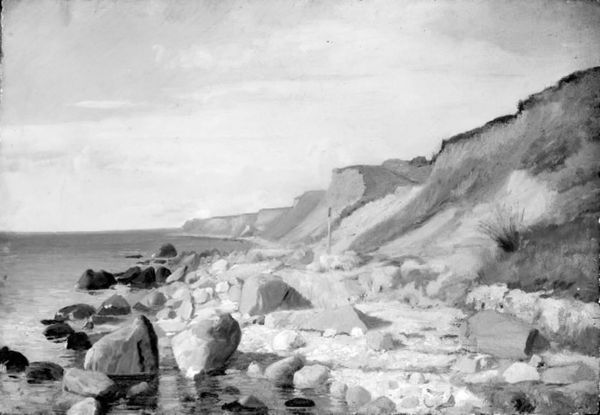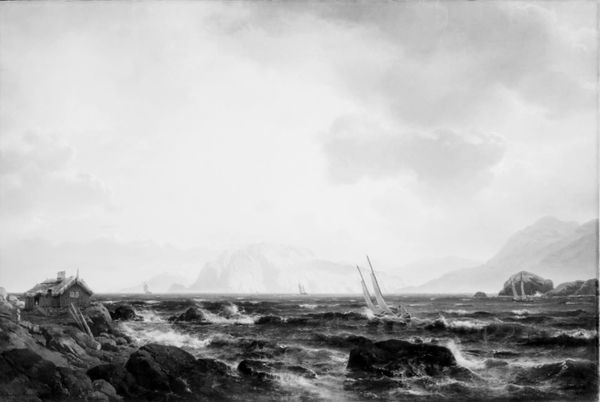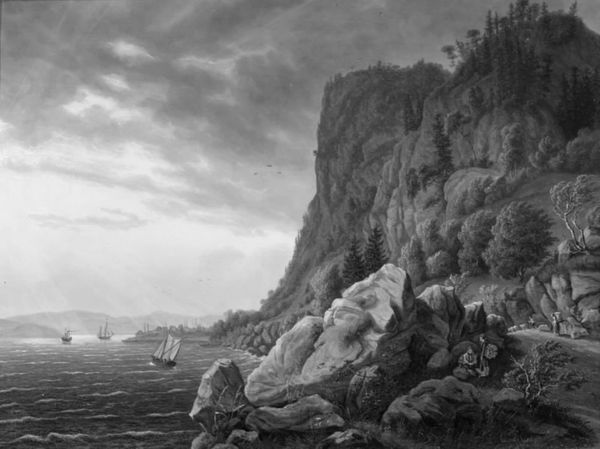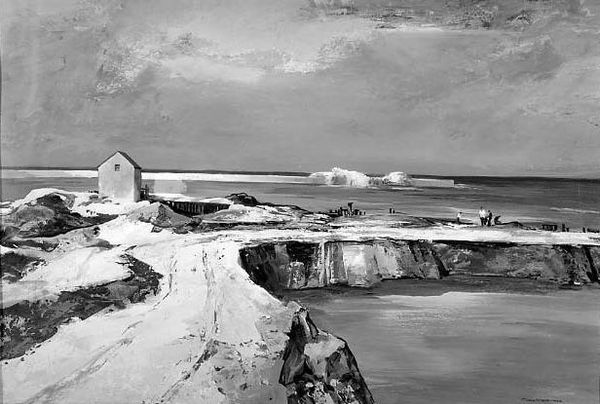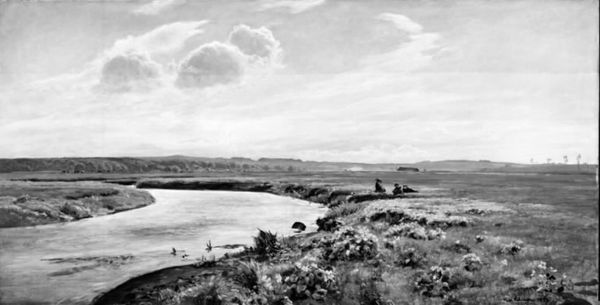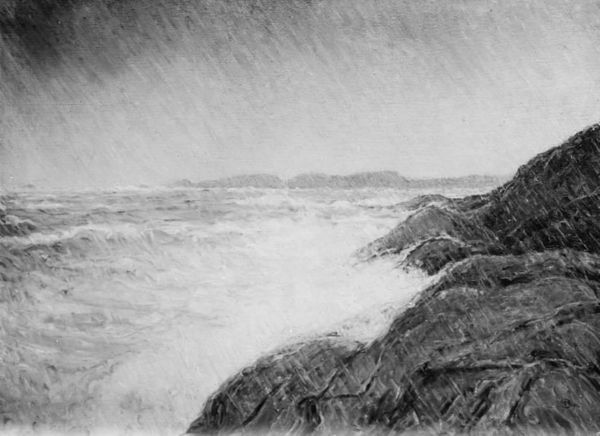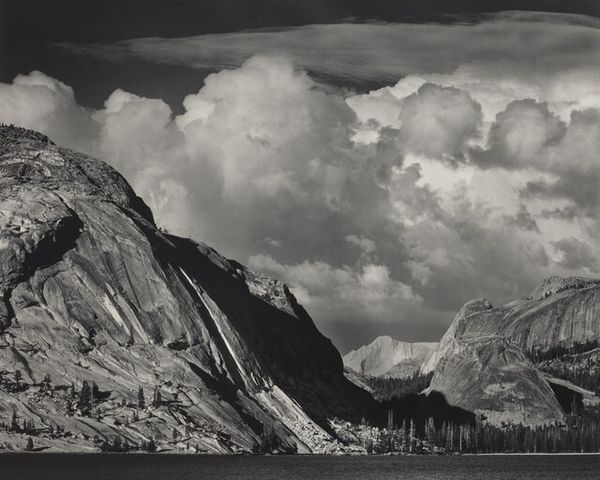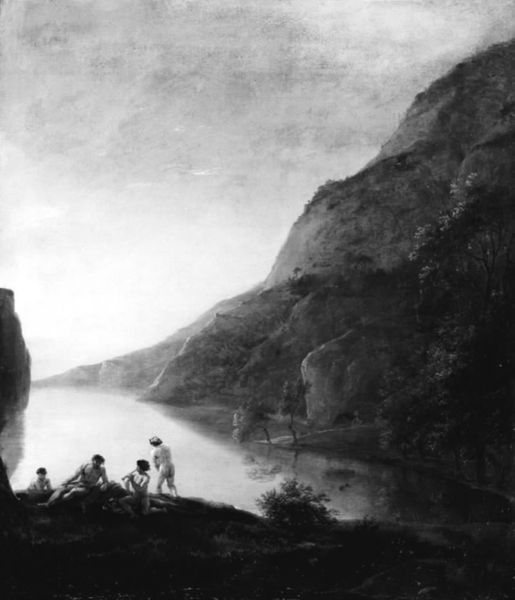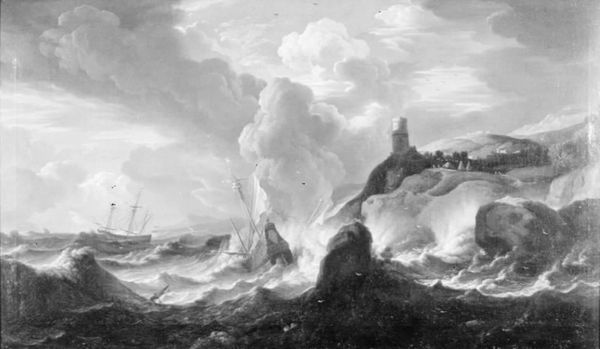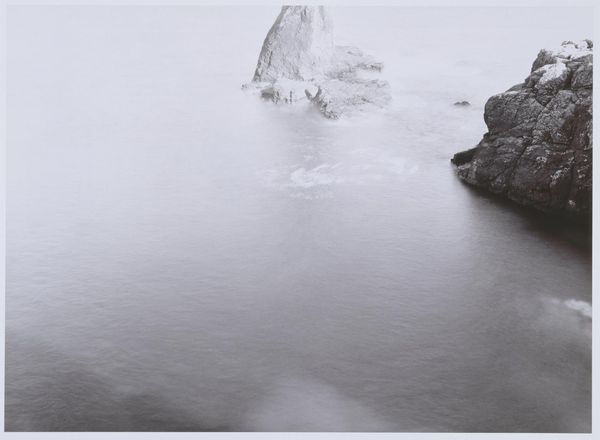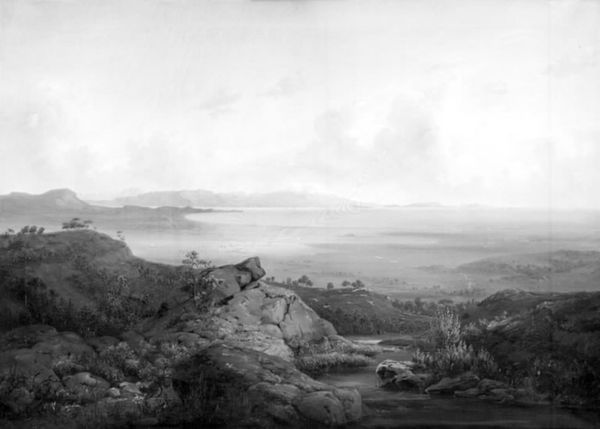
painting, plein-air, oil-paint
#
painting
#
countryside
#
plein-air
#
oil-paint
#
landscape
#
romanticism
#
monochrome
#
realism
#
monochrome
Dimensions: 131.5 cm (height) x 184.5 cm (width) (Netto)
Curator: Before us hangs Louis Gurlitt’s "Klippekyst, Kullen," painted in 1839. It’s an oil on canvas depicting the rocky coast of Kullen in Sweden. Editor: My initial impression is of a hushed scene, rendered in almost monochromatic tones. It’s both majestic and melancholic, quite somber actually. Curator: It reflects the Romantic era's fascination with the sublime power of nature, particularly seascapes. Gurlitt was part of the artistic circles in Copenhagen deeply influenced by the desire to depict the true likeness of nature as an emotional vessel of experience. Editor: Right, there is a strong sense of atmosphere, but the rocky terrain evokes feelings of fortitude, persistence through time. Is the stark palette somehow linked to prevailing artistic currents of the time? Curator: Absolutely, you can discern clear indications of realist tendencies in the piece which countered any overt emotional excesses, and this certainly resonates in his color selection. Editor: I see a tiny sailboat on the water, just to the left, what symbolic role do these elements play here? I believe such visual prompts give us deeper insights. Curator: They become the quintessential man-against-nature metaphor so prevalent in the era’s visual vocabulary, and can be interpreted as hope or solitude in the face of something vast. Notice, too, the figures by the coastline. Editor: It seems those subtle cues are designed to amplify our awareness, prompting us to engage at an intensely intimate and personal level. One feels immediately transported, yet simultaneously conscious of our own vulnerable and limited human condition. Curator: Exactly. This wasn’t just about faithfully depicting a landscape; it was about stirring the emotions and creating a dialogue with nature itself. Editor: In the end, Gurlitt offers more than mere visual representation. He provides us a contemplation on ourselves through symbols woven expertly within a vista, wouldn't you agree? Curator: I couldn’t agree more. He prompts reflections of resilience, perspective, and a yearning towards deeper understandings—art serving as both a window and a mirror.
Comments
No comments
Be the first to comment and join the conversation on the ultimate creative platform.

